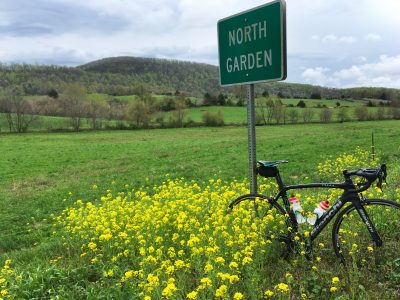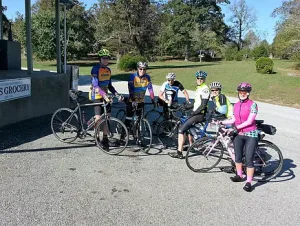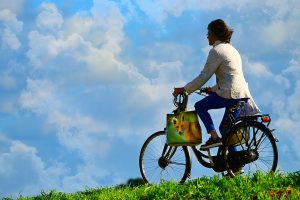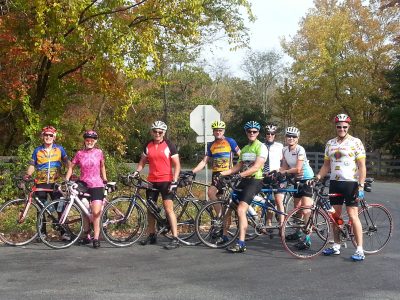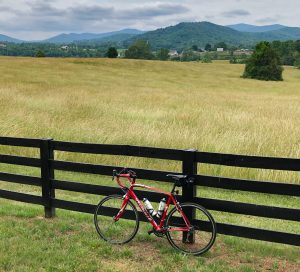Group Ride Policy and Safety Requirements

CBC seeks to promote a culture of fun, safe, recreational cycling. We are not a racing club. Members are strongly encouraged to be mindful of their individual paces so that everyone participating can ride together as a cohesive, organized group. Staying together, looking after each other, and engaging in best cycling practices benefits us all.
For the protection of all cyclists on club rides, CBC members and guests are expected to abide by the following policy and safety rules.
General
Ride defensively
Be aware of your surroundings at all times, including the presence of other cyclists, motorists, and road hazards. Look ahead and, using a mirror, behind you. Be especially vigilant of motorists behind you when turning left.
Accept personal responsibility for being a safe rider
What you do affects the safety of everyone around you. Pay attention to every aspect of your ride 100% of the time – accidents can and do happen.
Communicate
Never assume someone knows what you plan to do. Use hand signals or a very loud voice to indicate your intentions at all times. This includes slowing, stopping, passing, and turning. Always point or call out road hazards. Call out when you see a vehicle approaching from ahead or behind, “Car Back” or “Car Up”. Use hand signals to communicate your intention to turn to drivers, especially those behind
Be predictable
Be aware of the riders around you. Maintain a steady, consistent line. Don’t make a sudden change of line or move without being certain you are clear.
Ride as a group
Ride as a cohesive group, rather than a bunch of individuals. Look after your fellow riders. Regroup often or at least at major turns, after long ascents, and after intersections where vehicular traffic may be encountered in the route.
Break up into manageable, cohesive sub-groups
If the group is large, consider breaking into smaller sub-groups of similar paces to increase the safety aspects of the ride for both motorists and cyclists. Coordinate with your sub-group before leaving the parking lot.
Be very considerate towards motorists
Adhere to all traffic laws and signals. Cyclists follow the same laws as vehicles. Most of all, be considerate towards vehicular drivers and look for all opportunities to avoid conflicts with motorists.
Maintain group pace with E-bikes
E-bike riders are expected to maintain the pace of the analog bike riders with them. Encouraging analog riders to “chase” an e-bike disrupts the group and can create unsafe conditions.
Be proactive
We all share responsibility as club members. If you encounter unsafe behavior or conditions, speak up and respectfully address it.
Be an ambassador for the club
Be kind and courteous at all times. The reputation of the club, and its ability to maintain support from the community for what we do, depends on it.
Rules for Safe Riding
ALWAYS wear a helmet. No exceptions.
Always ensure someone at a ride has your emergency contact information. The easiest way to do this is with wearable identification, such as a Road ID.
Make sure your bicycle is in good condition and working order. Check your tire pressure and wear. Do NOT ride if your tires are worn or cut. Do a quick brake test of the front and back brakes in the parking lot before starting a ride.
Be seen at all times. Front/rear lights and reflectors are highly recommended.
Wear high visibility clothing to make it easier for motorists to see you, especially in low light or high contrast conditions. High viz clothing is good, high viz clothing in motion is even better.
Wearing a mirror, particularly one mounted to your glasses or helmet, may be the simplest single action you can take to protect your health. With them, you can safely pass other cyclists, prevent brushes with approaching cars, and keep track of other riders who have dropped back for mechanical or other reasons.
Use of aero bars is prohibited.
Do not overlap wheels. Slow gradually if you have overlapped the wheel in front of you.
Communicate verbally and with hand signals about road hazards such as potholes, debris, road kill, gravel, puddles, railroad tracks, bumps, and slow moving vehicles. Point out joggers, turning vehicles and car doors opening in your path.
Observe all traffic rules, including stops signs. Do not ride in the opposite facing lane or center lane and be particularly mindful on curves and when cresting hills. On all group rides please stay toward the right in the right-hand lane, in single file or, if no traffic is present and safe to do so, no more than two abreast.
Ride single-file as often as possible. Virginia law requires this when cars are approaching you from behind.
If you are riding two abreast and need to single up for vehicular traffic, the outside rider slots in behind the inside rider.
Pass on the other rider’s left. You should NEVER pass someone on their right! If that rare exception must occur, be ABSOLUTELY certain that you are loudly communicating to them that you are doing so.
If you are a lone rider and have a group about to overtake you, stay to the RIGHT!
Signal before pulling off the front, and drift to the back as quickly as possible. If someone is on your left when a car approaches from the rear, give that rider some room to pull in ahead of you.
Do not cruise through stop signs or other intersections. Doing so forces those behind you to choose between getting dropped or taking dangerous risks to stay connected. Putting other people’s lives in danger is never acceptable. After going through an intersection, ride easily until the group has reformed.
Don’t leave a rider in need stranded. If you notice someone has dropped a chain, flatted, or pulled off the road, let the rest of the group know so everyone can stay together.
Stay off the roadway when not in motion.
If a dog approaches, strongly yell “NO!” before it reaches the road, while maintaining a predictable course and speed. Don’t slow down drastically and swerve, causing others in the group to go down.
In marginal weather (wet roads, fog, etc.), give yourself a bigger buffer between yourself and other cyclists and cars.
Road Conditions
The main generalization one can make about roads in the region is that it is impossible to generalize about them. The quality of paved roads that are considered safe for cyclists varies from quite good (wide, smooth, good visibility, occasionally even a bit of a shoulder) to acceptable (fairly good surface, fair visibility) to fairly poor (narrow, very winding, rough, moderate potholes). That said, most roads are quite acceptable. Note the following:
To the east and northeast of Charlottesville, the countryside is more open and roads tend to be a bit wider and less winding, so visibility tends to be greater.
Conversely, to the west, northwest, and south of Charlottesville (particularly as you get closer to the mountains), roads are narrower, hillier, and more winding, so visibility tends to be less.
The narrower the roads and the lower the quality of the pavement, the more you can expect potholes. However, you can encounter significant cracks and potholes on any road.
In hillier areas in particular, it’s not uncommon to encounter gravel which has washed across the road from driveways.
There are very few roads in the region with paved shoulders. Where there are shoulders, they are usually narrow and tend to disappear without warning. By Virginia law you are not required to use shoulders even when present; you have the same right to the lane as do cars. Exercise caution.
Traffic
One major contributing factor to safety in the region is the fact that in most areas, traffic is quite moderate. But as population in the area increases, so does the traffic. Note the following:
US 29, which runs from well to the south of the region to northern Virginia, is very busy and is not used by cyclists at all except for a few very short sections in rural areas to get from one back road to another.
- There are a few other major highways which should be generally avoided, although some cyclists use them in places. Some of these are US 33 (Spotswood Trail) which runs east/west through Greene, Orange, and Louisa counties; US 250, which runs east and west from Charlottesville; and Route 151 from western Albemarle south through Nelson and Amherst counties.
There are only a few routes in and out of the City of Charlottesville, and these tend to be busy, especially during morning and afternoon rush hours. Riding from town to starting points away from town is best avoided or left to very experienced riders.
Many of the rural roads are hilly or winding or both, and people sometimes drive faster than they should. Always be alert.
Drivers in the region, in general, tend to be accommodating when encountering cyclists. However, like everywhere there are exceptions. Always be alert and protect yourself.
Dogs
Most of the region discussed on this site is very rural, and dogs are an inevitable part of country life. Outside of the city, dogs are clearly involved in more bicycle accidents than motor vehicles, although cars of course can cause much greater damage. Several comments:
Invisible fences are becoming more common even along rural roads, and seem to be effective, so perhaps dogs who get out in the road are becoming a bit less common.
Most dogs who come into the road and chase bicycles are not so aggressive as to try to bite a rider; many are simply being playful. However, it’s impossible to predict which dog will be the exception. Always be alert.
Saying “NO” to an approaching dog in a firm, loud voice will get the dog to stop or slow down more often than you might think.
Beyond that, riders vary widely in how they deal with a potentially threatening situation, whether they try to madly outrace the dog, try to spray it with a water bottle, or slow down and be ready to stop and confront the animal.
If you are riding in a group, the “mad scramble” approach probably creates more risk from the other riders than there is from the dog. Whatever tactic you try, stay alert to the entire situation and don’t focus only on the dog.
